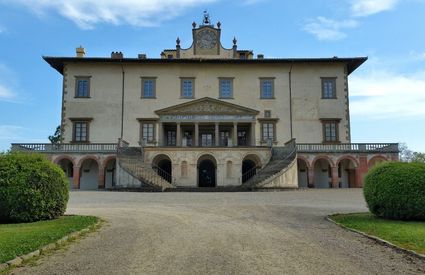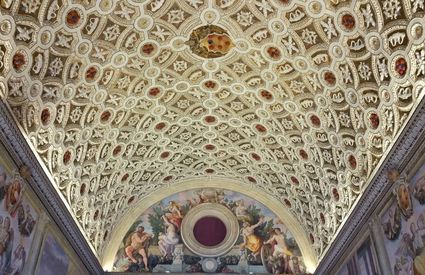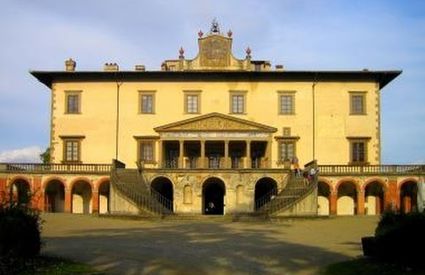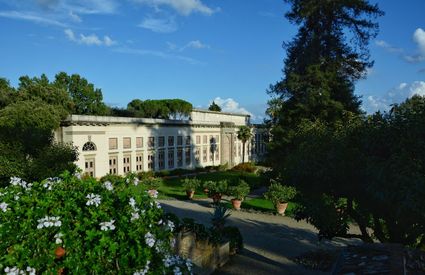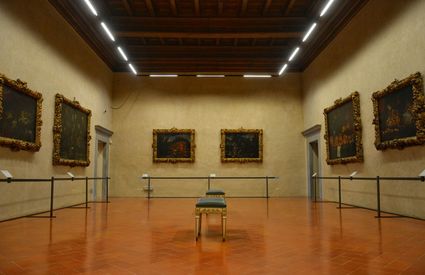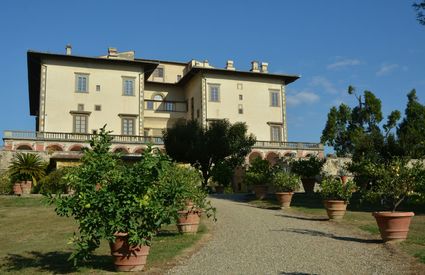Poggio a Caiano
The outdoor Renaissance
The Medici Villa in Poggio a Caiano and the humanistic dreams of Lorenzo the Magnificent ~ by Lorenzo Chiodi
The outdoor Renaissance
The Medici Villa in Poggio a Caiano and the humanistic dreams of Lorenzo the Magnificent ~ by Lorenzo Chiodi
When the Renaissance goes to the countryside
The Medici family dotted Tuscany with their marvellous, fortress-like villas, suburban centres of power scattered throughout their lands. But then there is one that lacks such a severe appearance, the setting of a famous, though dark, historical episode that unfolded on its grounds: the Villa of Poggio a Caiano.
Poggio a Caiano is a small town nestled between Florence, Prato and Pistoia that rose up around the Medici Villa at the beginning of the 1500s, when jobs brought artists to the area, who established the first settlement.
Lorenzo the Magnificent commissioned Giuliano da Sangallo to build a country getaway, or as it’s also called, a summer residence, but there was one condition: there would be no fortress like aspects to this estate. Open to the environment and the light, with its large terrace surrounding it, it seems to welcome and at the same time, blend with the landscape, with the pleasures of life. In addition to being a hub of thriving farms, indeed, it was devoted to welcoming great artists and future foreign brides of the family.
Welcome to the inauguration of the outdoor Renaissance
A story in History: Bianca Cappello and Francesco I de’ Medici
Bianca Cappello was a beautiful Venetian noblewoman, who one day fled to Florence with her lover, the poor merchant Pietro Bonaventuri. The girl’s father was furious and moved heaven and earth to bring his daughter back to Venice, even imploring Cosimo I to get involved, but he had to back down when Bianca and the merchant married under the protective wing of Francesco de’ Medici.
Cosimo’s son, however, took a liking to the beautiful Venetian, who returned his affections, and so, they began a secret love affair; their story was known to everyone though, even including Francesco’s wife, Joanna of Austria, and Bianca’s husband.
Novel-worthy twists andintrigues – to give an idea: the assassination of Bonaventuri and a fake pregnancy by Bianca – didn’t shake the feelings the two lovers had for each other: after the death of Cosimo I and Francesco’s subsequent rise to the throne, Bianca Cappello became for all intents and purposes the most important woman in the Grand Duchy. And if that wasn’t enough, that same year the Grand Duke and the Venetian courtesan married. It was a marriage organized in complete secrecy which Bianca worried about going public. In Venice, any remaining anger dissolved at once, but the same can’t be said for Florence. The cardinal Ferdinando, Francesco’s brother, was a spiteful man.
The following year, Francesco and Bianca married again, this
time officially, in the villa in Poggio a Caiano.
And it was here that, just a few years later, the two spouses settled in for their holiday. It was September, the right period to take up hunting again. It seemed that the cardinal Ferdinand also wanted in on the activity, joining his brother and sister-in-law at the villa.
It should have been an occasion to resolve any discord between the couple and the cardinal, but it didn’t go that way.
Francesco died at the beginning of October, Bianca some days thereafter. The cause of the two deaths is still uncertain, but there are those who say that they were poisoned with arsenic.


